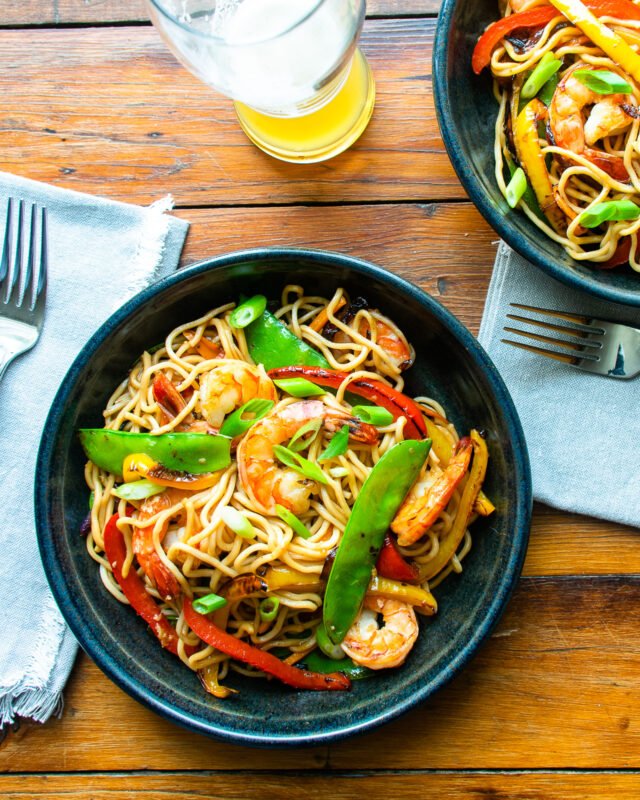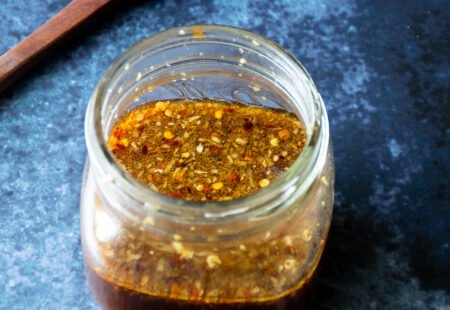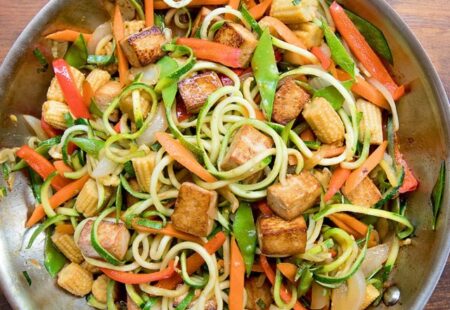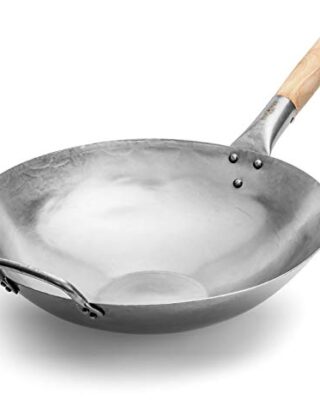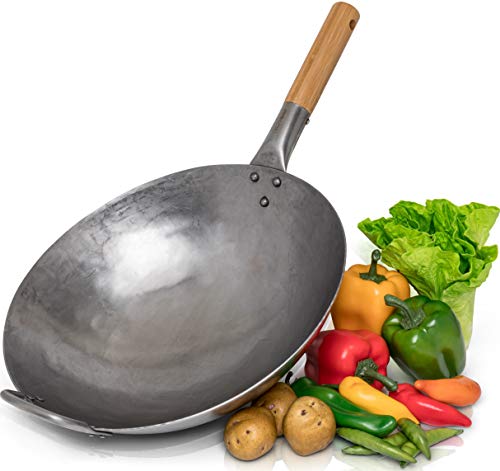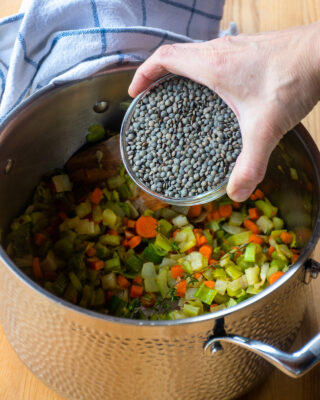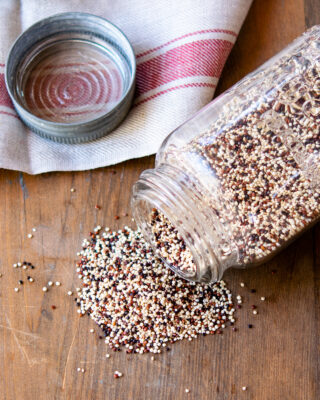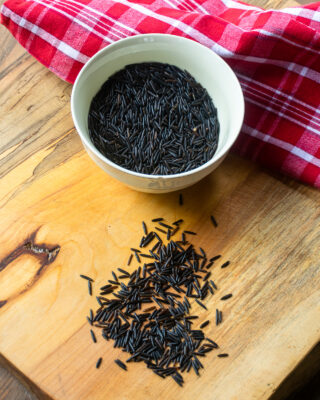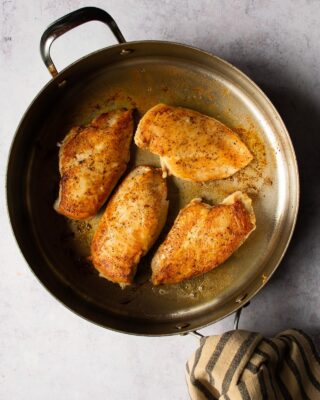What is a “Stir Fry”?
Very basically, to stir fry means to add ingredients to a pan with very hot oil and cook quickly while stirring almost constantly. It’s quite possibly the fastest way to get dinner on the table, depending on how many different ingredients you choose to add. It’s also one of the easiest ways to cook without a recipe, as long as you know a few tips and tricks to help you along the way. Let’s learn how to stir fry.
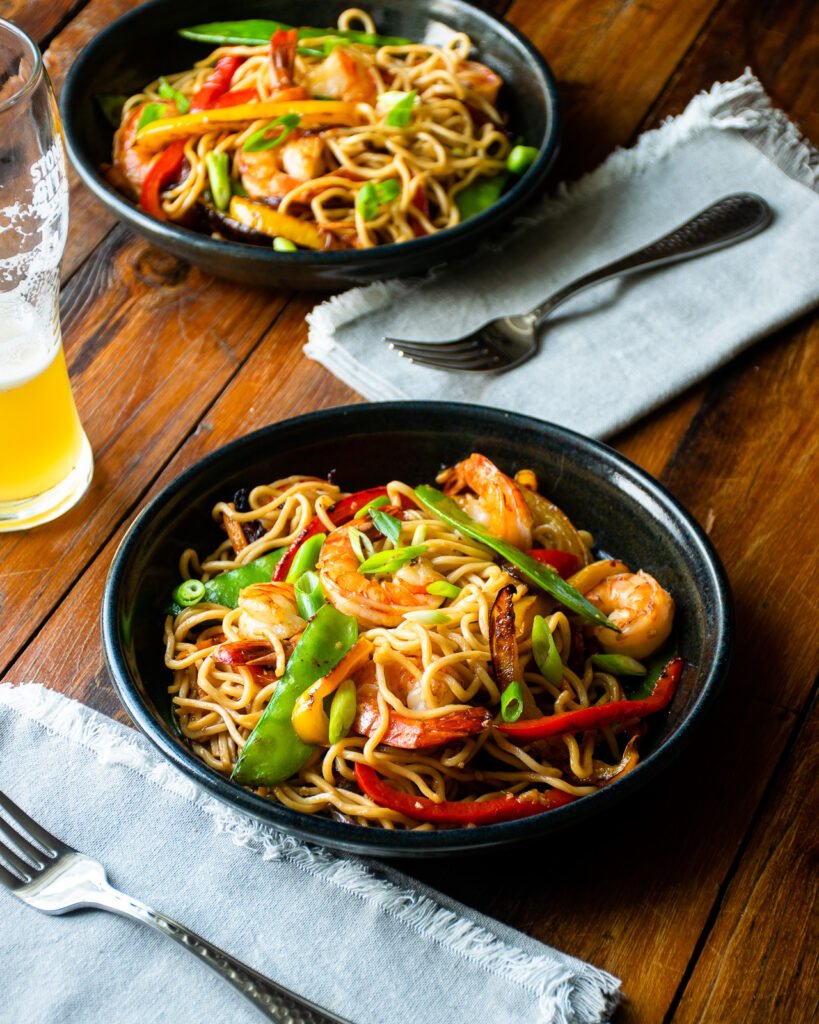
The Right Pan
The first step, and a good habit to get into, is to use the right pan for the job. In the case of a stir fry, the right pan is a wok or large skillet, and when I say large skillet, I mean at least 12-inches in diameter. You need a pan that can handle high heat and has a nice large surface area so you can cook a lot at one time without over-crowding. It’s also somewhat important that the pan be relatively lightweight so that you can toss the foods around easily. If you don’t feel comfortable tossing foods in a pan, of course you can simply stir the ingredients instead – it is, after all, called a stir fry.
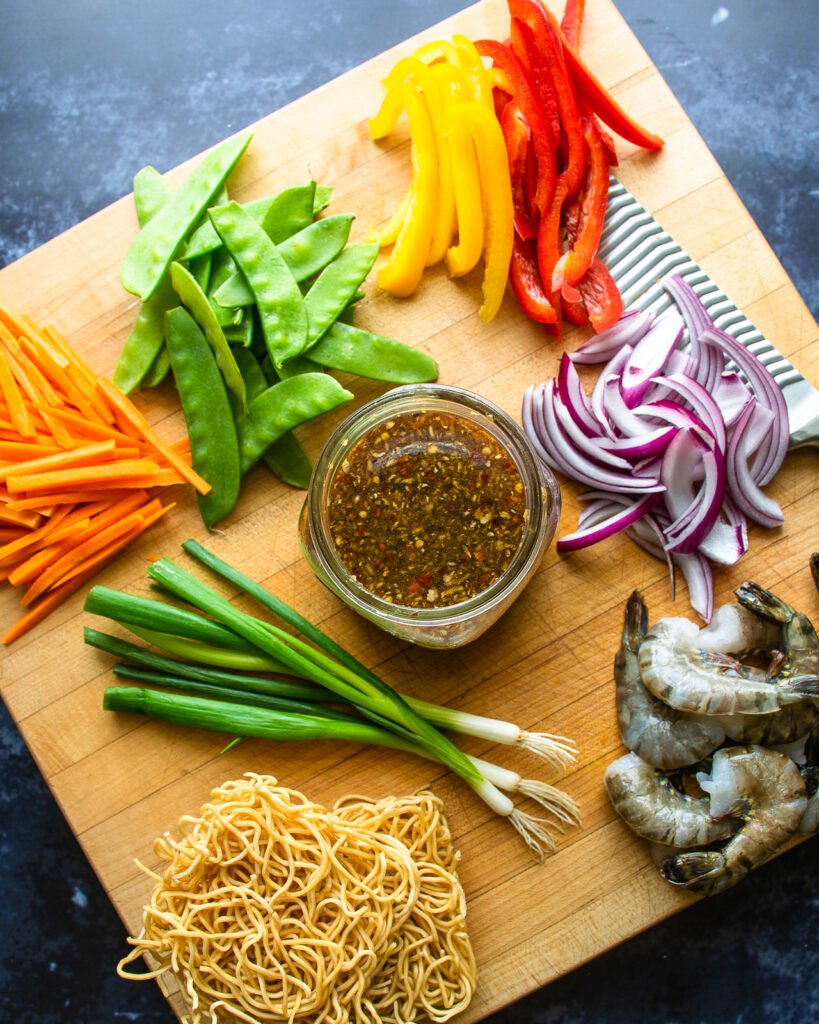
Perfect Stir Fry Equation
You can cook a stir fry without a recipe if you know the ratio of ingredients that you need. The perfect stir fry equation is:
1 pound of protein + 6 cups chopped vegetables + 1 cup stir fry sauce
This will make a stir fry for roughly four people served on rice or noodles. The protein could be chicken, beef, pork, shrimp or tofu, or you could leave it out altogether and simply increase the amount of vegetables in the stir fry. The vegetables can be any variety of vegetables, but usually it doesn’t include really starchy vegetables like potatoes or sweet potatoes. Good vegetables for stir fries include onions, carrots, peppers, beans, asparagus, snow peas, snap peas, broccoli, cauliflower, mushrooms, baby corn… but there really are no limits.
As for the sauce, we’ll talk about that a little later on.
Rice or Noodles
Generally, a stir fry is served over rice or noodles. The actual stir fry itself, however, is so quick cooking that it’s important to prepare your rice or noodles first. Cook the rice and let it sit, staying warm until you are ready to serve (you can learn more about cooking rice here). If you are serving noodles, cook the noodles and then toss them into the stir fry at the end, just before you add the sauce.
Prep First
Before you even turn on the heat, prep all your ingredients first. Once the heat is on and you’re stirring away as you fry, there will be no time to do anything else. It’s more fun to have all your ingredients ready to go anyway. When you chop your ingredients, there are a few things to keep in mind. First of all, you will probably be eating with a fork (not a knife), so make the vegetables a size that is easy to eat in one bite. Secondly, make the vegetables a similar shape and size so that they cook evenly. Finally, consider surface area. The more surface area there is to an ingredient, the more flavor it can soak up from the sauce. This is especially true for proteins like chicken, beef and pork. Slice these ingredients into thin flat pieces so they cook quickly and have a nice surface area.
Before you start to cook, sort the ingredients into an order from hardest (the ones that will take the longest to cook) to softest (those that will cook the quickest). This is the order that you will add the ingredients to the pan.
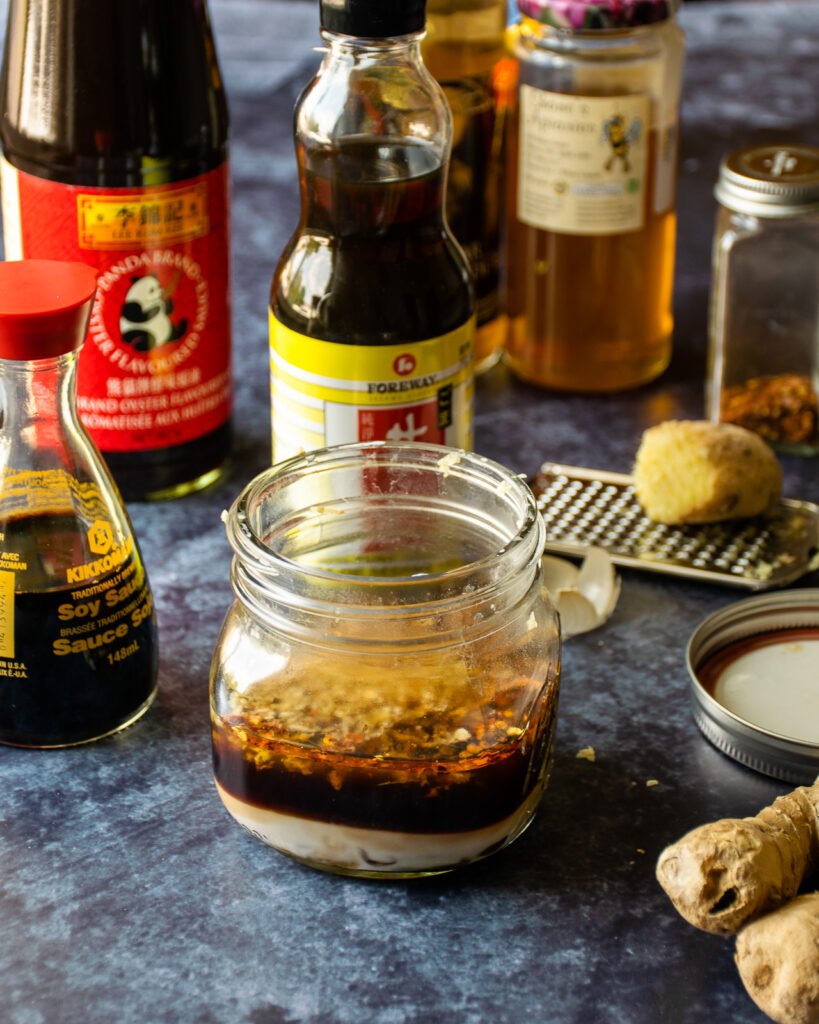
Stir Fry Sauce
While you don’t have to make a stir fry sauce, it’s certainly easier to pull the whole meal together if you do. A stir fry sauce takes just seconds to put together (shake it all up in a jar) and you can keep it in your refrigerator for that day of the week when you need a quick dinner. Key flavors in a good stir fry sauce are salty (soy sauce), sweet (honey or oyster sauce), spicy (chili flake) and robust (garlic, ginger, rice vinegar). You can find a good recipe for stir fry sauce here. Another advantage of using a pre-mixed stir fry sauce is that you can make sure it includes ingredients that you would otherwise have to add to the pan at a different stage of the stir fry process like cornstarch, garlic and ginger. Cornstarch helps thicken the sauce when it hits the pan. If you don’t have cornstarch in the sauce, you should add it to the stir fry by coating meat proteins in cornstarch before frying, or at the end mixed with a little water. Ginger and garlic are delicate ingredients that burn easily. They would need to be added after stir-frying all the vegetables and protein. So, it makes sense to have these ingredients in the sauce instead to save you a step.
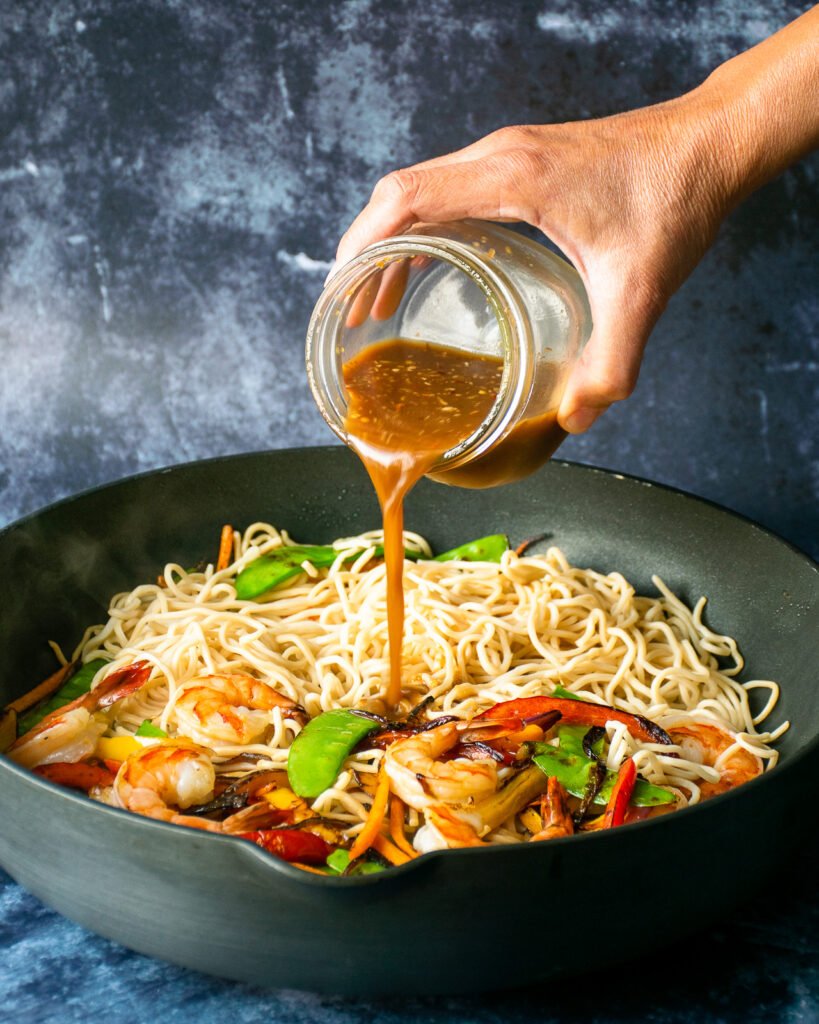
High Heat
Once you have everything ready to go – rice or noodles cooked, protein and vegetables chopped, sauce made – it’s time to put it all together. Pre-heat your pan (the right pan) over high heat. Not medium-high. High. Once the pan is hot, add a neutrally flavored oil (like canola, vegetable or peanut oil) and start by adding your hardest ingredients (those that take the longest to cook) first. The pan should sizzle as soon as you drop your first ingredients into the oil. If it doesn’t sizzle, your pan and oil are not hot enough.
The most important rule to remember at this stage is:
Don’t overcrowd your pan.
I can’t emphasize this enough. Your vegetables or protein should be in one layer in the pan. There needs to be surface area on the bottom of the pan for any liquid from the ingredients to evaporate immediately. If it can’t evaporate, it will accumulate and that will leave you with a soggy stir fry. No one wants that! So, cook in batches if you need to – cook the veg and remove it to a side plate, add the next ingredient and remove that to a side plate, and then toss everything back together at the end.
You can choose to cook the vegetables first (from hardest to softest) or cook the protein first, but just remember not to overcrowd the pan at any one time. Once everything is cooked, toss it all in the pan, add the noodles (if you are using noodles) and add the sauce. Keep the heat high for a couple more minutes as you toss everything around – this will give the cornstarch in the sauce the time it needs to do its job of thickening slightly. And you’re done!
It may sound like a lot of work, but in fact it’s really not. Stir fries truly are the quintessential quick dinner and once you’ve done it right once, a stir fry is a breeze to pull together quickly any night of the week.
Quick Notes:
- Use the right pan for the job – a wok or a large flat bottomed skillet is best.
- Cook your noodles or rice first and set aside.
- Stir Fry Ratio: 1 pound protein + 6 cups chopped vegetables + 1 cup stir fry sauce
- Prep the ingredients before turning on the heat.
- Use high heat.
- Add ingredients to the pan from hardest to softest.
- Don’t over-crowd. Work in batches if you have to.
- Add delicate ingredients (garlic, ginger) last.
- Add stir fry sauce at the end.
